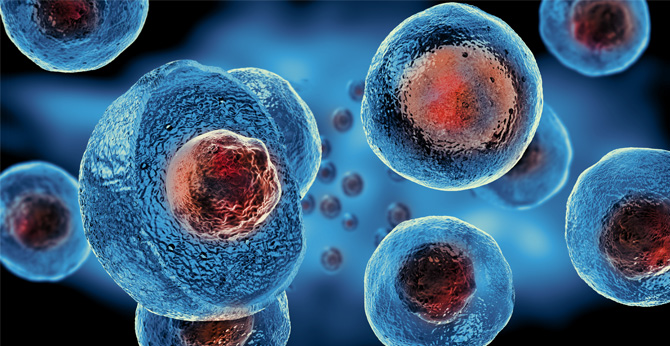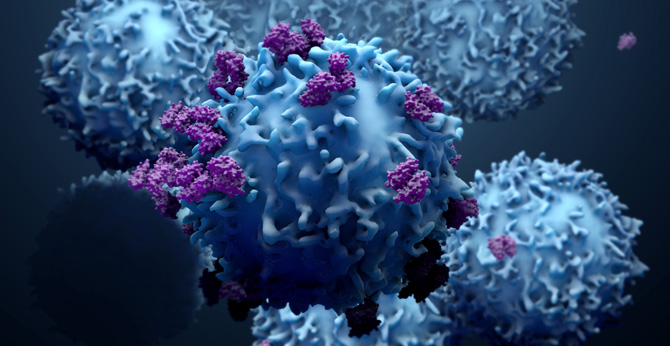All products and services are For Research Use Only and CANNOT be used in the treatment or diagnosis of disease.
The HIV Nef protein is a multifunctional virulence factor that perturbs intracellular membranes and signalling and is secreted into exosomes. While Nef-containing exosomes have a distinct proteomic profile, no comprehensive analysis of their miRNA cargo has been carried out. Since Nef functions as a viral suppressor of RNA interference and disturbs the distribution of RNA-induced silencing complex proteins between cells and exosomes, we hypothesized that it might also affect the export of miRNAs into exosomes.
 Loading...
Loading...
| CAT | Product Name | Target Species | TCR Clone | Host Species | Epitope | Allele | Vector Type | Inquiry & Datasheet |
| TCR-L076 | Human anti-nef (KAAVDLSHFL) T Cell Receptor, pMSGV1 | HIV | Human | KAAVDLSHFL | HLA-C*0802 | retroviral vector | ||
| TCR-L075Z | Human anti-nef (aa82-91) T cell receptor, pCDTCR1 | HIV | Human | KAAVDLSHFL | HLA-C*0802 | Lentiviral | ||
| TCR-C168Z | Human anti-Nef T cell receptor (H27-14), pCDTCR1 | HIV-1 | H27-14 | Human | RYPLTFGWCF | HLA-A24 | Lentiviral | |
| TCR-C169Z | Human anti-Nef (PDWQNYTPGPG) T cell receptor, pCDTCR1 | HIV-1 | Human | PDWQNYTPGPG | HLA-A24 | Lentiviral | ||
| TCR-C170Z | Human anti-Nef (RPMTYKGAL) T cell receptor, pCDTCR1 | HIV-1 | Human | RPMTYKGAL | HLA-B0702 | Lentiviral | ||
| TCR-C171Z | Human anti-Nef T cell receptor (C1-28), pCDTCR1 | HIV-1 | C1-28 | Human | RYPLTFGWCF | HLA-A24 | Lentiviral | |
| TCR-L325 | Human anti-nef T cell receptor (HIV-B8-FL8), pCDTCR1 | HIV-l | HIV-B8-FL8 | Human | FLKEKGGL | HLA-B8 | Lentiviral | |
| TCR-L328 | Human anti-nef T cell receptor (HIV-B8-FL8-2), pCDTCR1 | HIV-l | HIV-B8-FL8-2 | Human | FLKEKGGL | HLA-B8 | Lentiviral | |
| TCR-L333 | Human anti-nef T cell receptor (HIV-B60-KL9), pCDTCR1 | HIV-l | HIV-B60-KL9 | Human | KEKGGLEGL | HLA-B60 | Lentiviral | |
| TCR-L335 | Human anti-nef T cell receptor (HIV-A3-QK10), pCDTCR1 | HIV-l | HIV-A3-QK10 | Human | QVPLRPMTYK | HLA-A3/A11 | Lentiviral | |
| TCR-L336 | Human anti-nef T cell receptor (HIV-A3-QK10-2), pCDTCR1 | HIV-l | HIV-A3-QK10-2 | Human | QVPLRPMTYK | HLA-A3/A11 | Lentiviral | |
| TCR-L337 | Human anti-nef T cell receptor (HIV-A3-QK10-3), pCDTCR1 | HIV-l | HIV-A3-QK10-3 | Human | QVPLRPMTYK | HLA-A3/A11 | Lentiviral | |
| TCR-L338 | Human anti-nef T cell receptor (HIV-A3-QK10-4), pCDTCR1 | HIV-l | HIV-A3-QK10-4 | Human | QVPLRPMTYK | HLA-A3/A11 | Lentiviral | |
| TCR-L339 | Human anti-nef T cell receptor (HIV-A3-QK10-5), pCDTCR1 | HIV-l | HIV-A3-QK10-5 | Human | QVPLRPMTYK | HLA-A3/A11 | Lentiviral | |
| TCR-L340 | Human anti-nef T cell receptor (HIV-A3-QK10-6), pCDTCR1 | HIV-l | HIV-A3-QK10-6 | Human | QVPLRPMTYK | HLA-A3 | Lentiviral | |
| TCR-L341 | Human anti-nef T cell receptor (HIV-A3-QK10-7), pCDTCR1 | HIV-l | HIV-A3-QK10-7 | Human | QVPLRPMTYK | HLA-A3 | Lentiviral | |
| TCR-C458 | Human anti-Nef T cell receptor (CB-C198), pCDTCR1 | HIV-1 | CB-C198 | Human | RYPLTFGWCF | HLA-A*24:02 | Lentiviral vector | |
| TCR-C459 | Human anti-Nef T cell receptor (CB-C199), pCDTCR1 | HIV-1 | CB-C199 | Human | RYPLTFGWCF | HLA-A*24:02 | Lentiviral vector | |
| TCR-C460 | Human anti-Nef T cell receptor (CB-C200), pCDTCR1 | HIV-1 | CB-C200 | Human | RYPLTFGWCF | HLA-A*24:02 | Lentiviral vector | |
| TCR-C461 | Human anti-Nef T cell receptor (CB-C201), pCDTCR1 | HIV-1 | CB-C201 | Human | RYPLTFGWCF | HLA-A*24:02 | Lentiviral vector |
 NEWSLETTER
NEWSLETTER
The latest newsletter to introduce the latest breaking information, our site updates, field and other scientific news, important events, and insights from industry leaders
LEARN MORE NEWSLETTER NEW SOLUTION
NEW SOLUTION
CellRapeutics™ In Vivo Cell Engineering: One-stop in vivo T/B/NK cell and macrophage engineering services covering vectors construction to function verification.
LEARN MORE SOLUTION NOVEL TECHNOLOGY
NOVEL TECHNOLOGY
Silence™ CAR-T Cell: A novel platform to enhance CAR-T cell immunotherapy by combining RNAi technology to suppress genes that may impede CAR functionality.
LEARN MORE NOVEL TECHNOLOGY NEW SOLUTION
NEW SOLUTION
Canine CAR-T Therapy Development: From early target discovery, CAR design and construction, cell culture, and transfection, to in vitro and in vivo function validation.
LEARN MORE SOLUTION